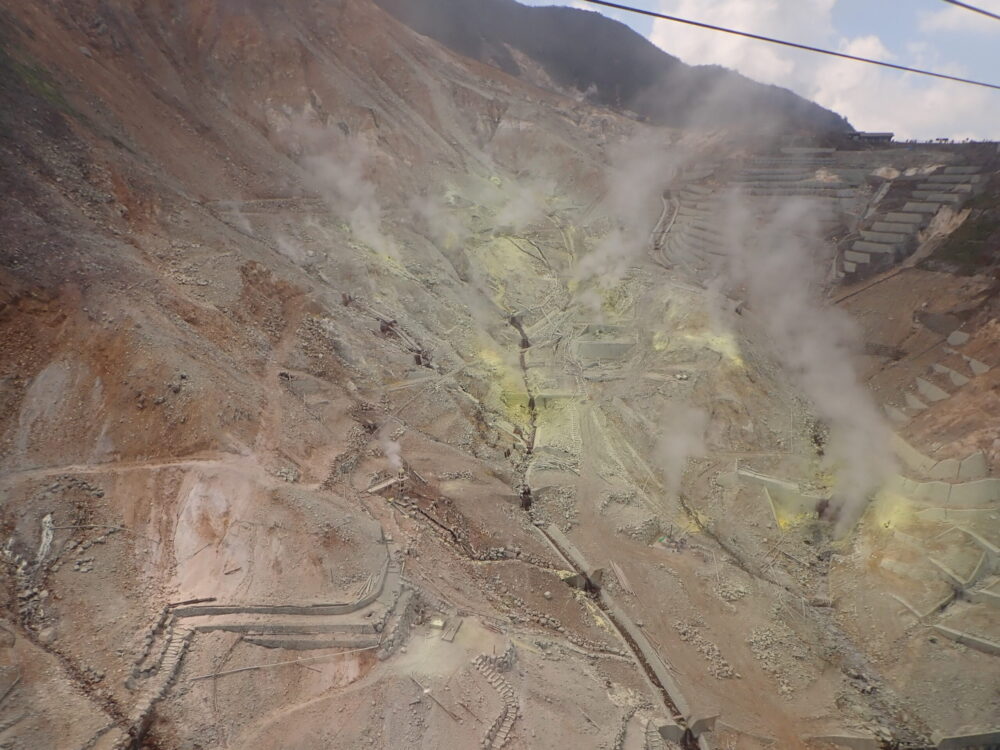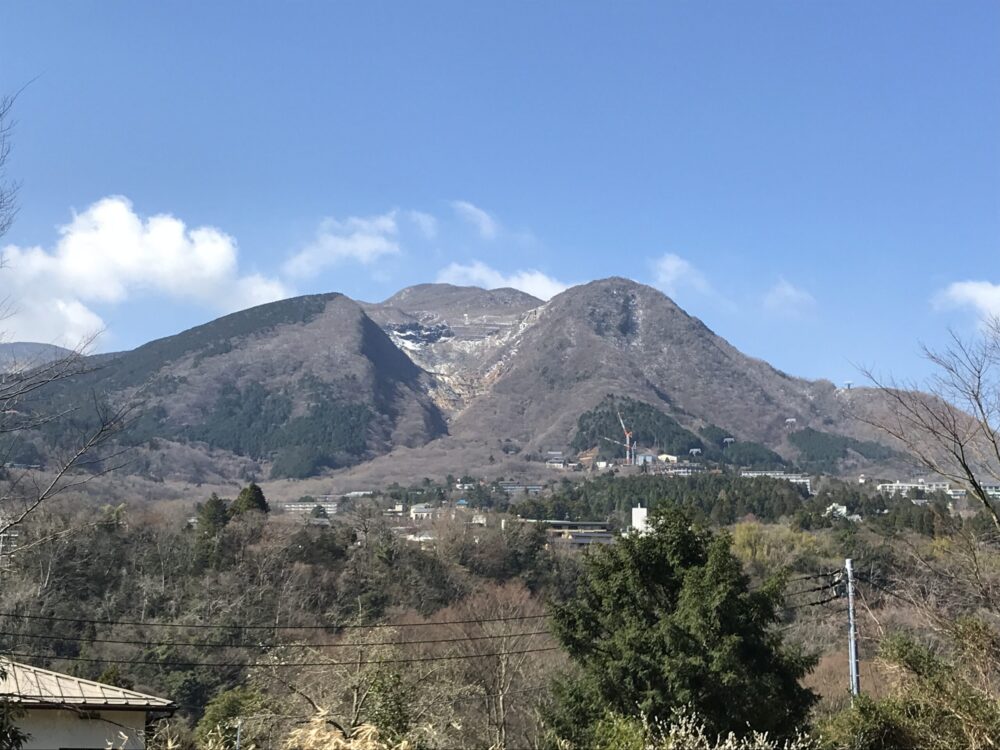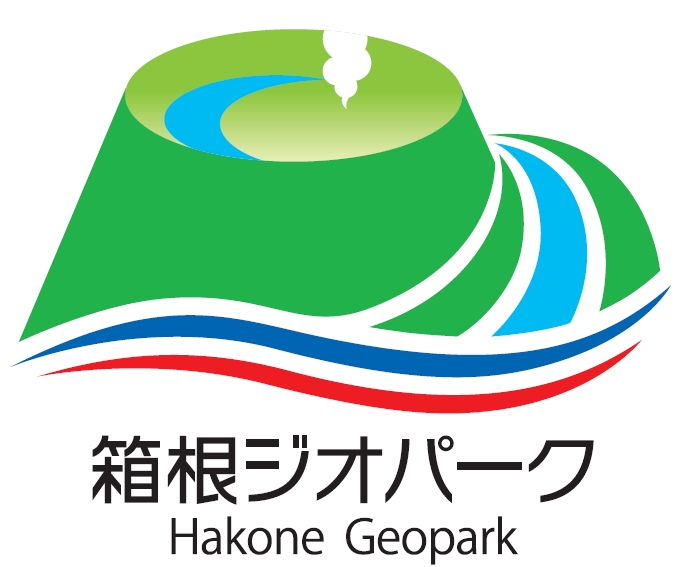Mt. Sounzan and Owakuzawa are collapsed areas in fumarolic zones.
Owakuzawa is a large valley on the east side of Owakudani. Entrance is prohibited to protect the public from danger; however, it is possible to see inside the valley from the Hakone Ropeway (Photo 1). The yellow deposits are sulfur. The chimney-like structure is a steam well hot spring development tower, where well water from Sengokuhara is pumped up and mixed with steam (volcanic gas) discharged from this steam well to create hot spring water, which is then sent to lodging facilities in Sengokuhara and other areas.
In the center of Mt. Sounzan, located on the northeast side of Mt. Kamiyama, there is a collapsed area called Suzawa (Photo 2). This area is also prohibited to protect the public from danger, and similarly, there is steam well hot spring development facility.
A major collapse occurred at Owakuzawa in 1910 (Meiji 43), causing soil to flow down blocking the Hayakawa River and forming a natural dam. However, the dam collapsed the following day, causing huge amounts of soil and rocks to crash into Tonosawa and other downstream areas, killing six people. In 1953 (Showa 28), a major collapse occurred at Mt. Sounzan, and the landslide hit the Daiyuzan Saijoji Temple Hakone Branch, located downstream and 13 people were killed. To prevent further disasters, Kanagawa Prefecture is currently carrying out large-scale erosion control projects in these areas.


